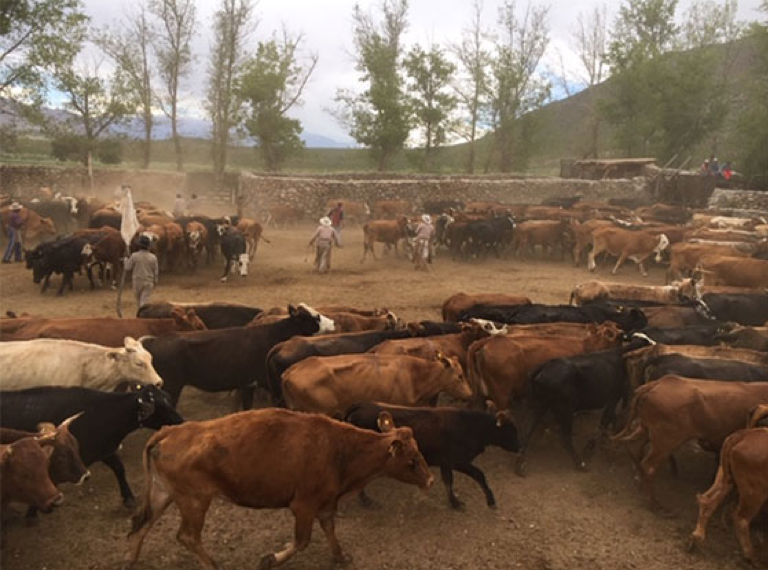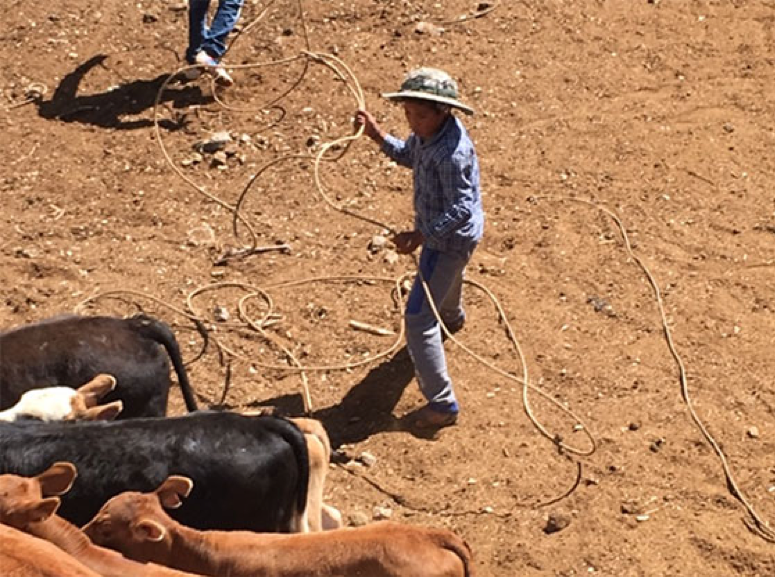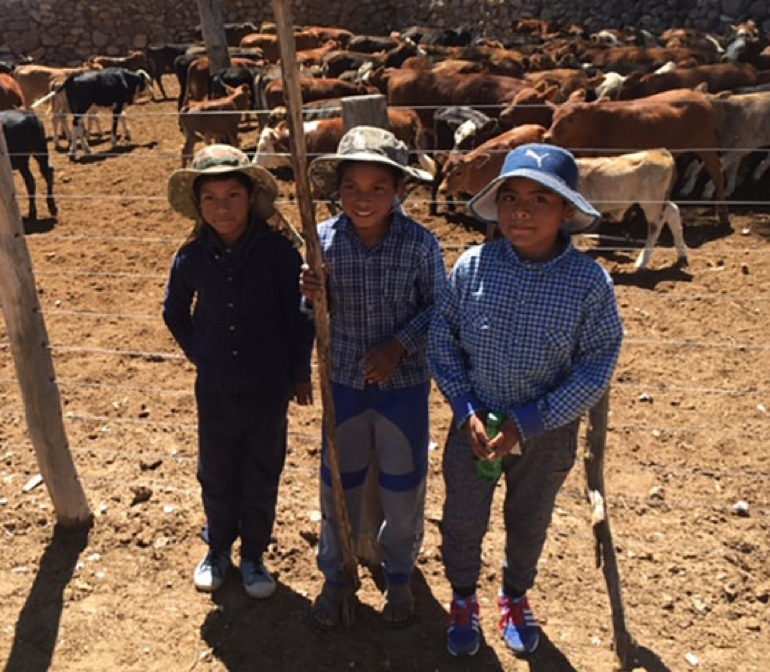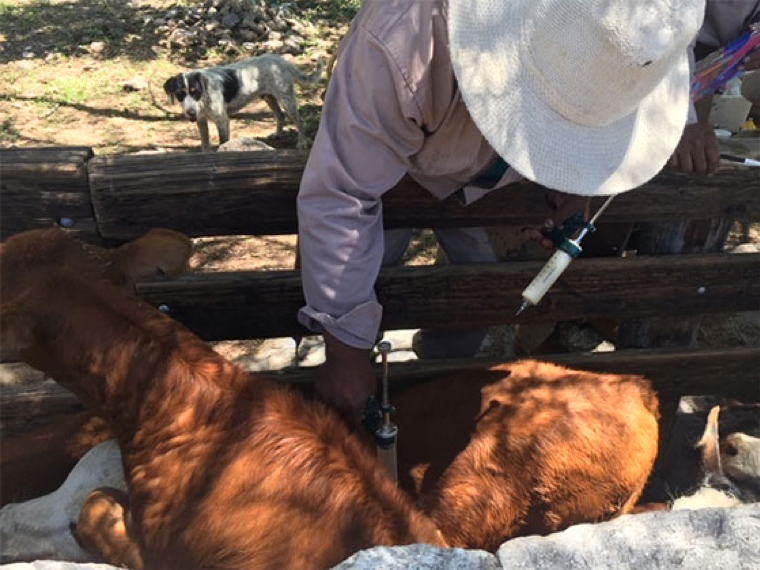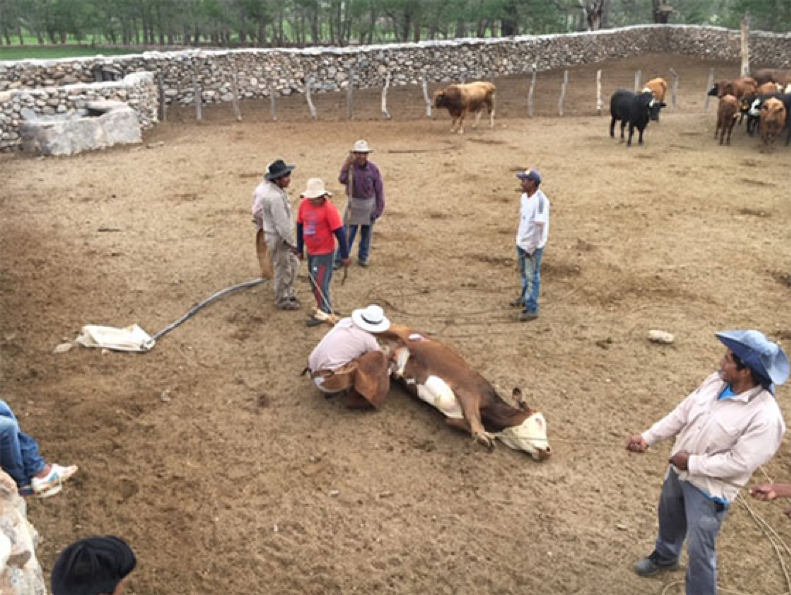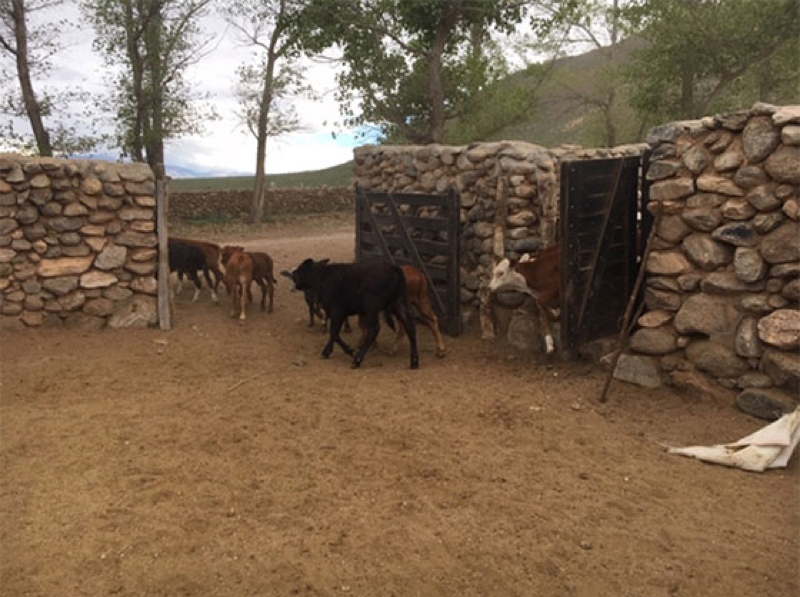GUALFIN, ARGENTINA – Warning: The following may not be suitable for today’s namby-pamby, panty-waisted, gluten-fearing audiences.
Cattle Drive
Yesterday was the roundup. We set out on horseback early in the morning. But the gauchos were way ahead of us.
We were meant to ride to the end of the river, where it enters a narrow pass into the next valley. Neither cattle, nor horsemen, can make it through the defile, so the cattle tend to spread themselves out in the green grass in front of it.
Because of the way the land lies, that part of the farm is always the last place to dry out… and it is the first place to look for cattle.
It takes about two hours to get out there, riding through the marshes or along the sandy banks on the side. Then, the cowboys disperse, working their way around both sides, so they can drive the cattle back in the direction from which they just came.
As you know, Dear Reader, we are traveling. Looking around, we hope to learn something about other places, other people, and ourselves.
Not to give away too much of the plot, but we will see that most of what motivates “us versus them” public policies is based on a lie. And the real “us vs. them”… the one that matters… is entirely different from the one we’re encouraged to believe.
And today, our parkour takes us on a very old-fashioned cattle drive.
Dust Lay Still
Until the cattle begin moving, everyone is silent… getting into position… and watching as the sun rises, hot and clear. Then the hullabaloo begins, each man with his own yell, whistle or shout… each whirling his lasso above his head and bidding the cattle to get underway.
The dogs open up at the same moment, attacking their hooves with a lusty enthusiasm. And then, the cattle themselves, seeing themselves the object of so much hostile attention, begin their moans and moos… which become louder and more desperate as they are separated from their calves in the melee.
And suddenly, the roundup is underway.
The cattle at Gualfin get moving
Usually, a huge cloud of dust accompanies the campaign, and the cowboys pull their bandanas over their faces. But the rains came late this year. The ground is still humid. The dust lay still.
Your editor is hardly an experienced horseman, let alone a seasoned gaucho. These men were born on their horses. We just started riding when we bought the ranch 10 years ago.
We were over 60 when we began riding regularly. Fortunately, our buckskin mare was a pro. All we had to do was to hold on… and look like we knew what we were doing.
But the mare not only knew the drill, she liked it. So, whenever a cow broke ranks, she raced hell-for-leather, down into gullies and ravines, up over hills… trying to get ahead of her and drive her back. More than once, we wondered if we would stay in the saddle.
Tangling With a Bull
Finally, the stone wall of the ranch complex came into view. The cattle headed through one gate, and then a few more gates. It was between the first and the second that word must have gone out among the cattle:
“This is our last chance; let’s make a break for it.”
And so they did… A dozen of them wheeled around suddenly and headed for the badlands, a hilly area of arroyos, cliffs and hidden canyons. In a flash, the dogs were on their heels. And a moment later, the gauchos too… as determined to bring the cattle back in line as the cattle were to escape.
The ringleader was a large bull, part Criollo, part Braford. We rode after him as the others dealt with the main body of runaways. But we were careful not to engage him.
First, because he was huge… and in no mood to be trifled with. And second, because we remembered what happened the last time we tried to whip a bull back into line.
Two years ago, a bull bolted as we were taking the cattle across the river. We rode at full gallop and got alongside him. Then, when we leant over to lay on the whip, the saddle gave way, we fell off and onto the sandy ground.
We were not hurt. And the gauchos quickly rounded up the bull. But it was humiliating. And dangerous.
So, rather than confront the big, brindle bull head on, this time, we stalked him. Like the Roman general Varro after Cannae, we did our best to stay out of reach. We rode parallel, keeping up with him, but not trying to engage him directly.
But the dogs were on the case… and wearing him out. After a few minutes, he came to a watering tank and stopped. He didn’t seem to know whether to go forward or back. And when we rode up, we eyed each other warily. He was not sure whether to run or charge; we didn’t know what to do.
We gave out our best gaucho yell, but it was probably the dogs who decided it. By this time, they were going at him with such fury that he found it impossible to hold his ground. He pawed… he kicked… he snorted… he tossed his head… and he turned and beat a retreat back toward the herd.
A few minutes later, the whole herd was safely confined in our stone corral.
Real Work
After a break for lunch, the real work began. First, the calves were separated out and driven into a special holding pen.
There, they would be lassoed by the boys – some as young as 8 or 11. It was great sport for them. They laughed. They threw their lassoes. They darted and dodged out of the way… for the calves were twice to three times their size.
When they got a rope on a calf, they would try to hold it in place as Natalio or Pablo – two of our gauchos – came over for the coup de grâce. They would clip a “V” out of the animal’s ear… saw off its horns, if it had any, and castrate it, if it needed it.
The whole operation took only a few minutes per calf, but there were 108 of them. They kept at it all afternoon.
The young gauchos lasso the calves
The little cowboys
It must have been some kind of optical illusion. Or, perhaps they just didn’t know any better. The boys seemed to be delighted.
But how could they be? They live in houses with dirt floors and no heat. Argentina has 40% inflation… no football team… an economy that is going backward… and a government that is struggling to survive. And here they were, forced to chase calves around a pen!
Despite their smiles and shouts of glee, they couldn’t be happy, could they? They don’t have iPhones or iPads. Won’t someone please donate some video games for them?
Main Theater
Meanwhile, the main theater of operations took place over in the big corral. Each animal needed to be run through the chute, where he was treated much like a person going through airport security. That is, he was prodded, poked… inspected… and his cajones, if he had any, were cut off.
One after another, the cows and bulls were run through the chute, locked in place… and given their shots, against carbuncle, aphthosis, and some generalized antibacterial that we didn’t understand.
The calves get their shots
Some of the cows took their medicine tranquilly. Others panicked and fought against their restraints, often crushing their fellow bovines in the process.
It took about four hours to process them all. But there were still a few loose ends to be tied up. Two of the young males were deemed not worthy to become bulls. They were now almost fully grown. But they, too, needed to be castrated.
Too big to hold down by putting a knee on the chest, they were lassoed front and back… and held firmly in place by gauchos on each end, while the surgery was performed, with a sharp gaucho knife.
The gauchos castrate a cow
Finally, the work was done. The boys were still running around, lassoes in hand. But the gauchos and your editor were tired. It was time to release the animals and turn in for the day.
The calves file out of the pen… their ordeal is finally over
Regards,
Bill
Category: Geopolitics


